Change language: Dutch (Nederlands) ![]()
Today most corner names on circuits are named after sponsors or they are simply numbered. In the old days of motor racing, corners had original names. On this page we will explain how the corners at old Zandvoort came to their unique names.
Tarzan Corner
The Tarzan Corner is the most famous corner of Zandvoort and well known for the many overtaking manoeuvres.
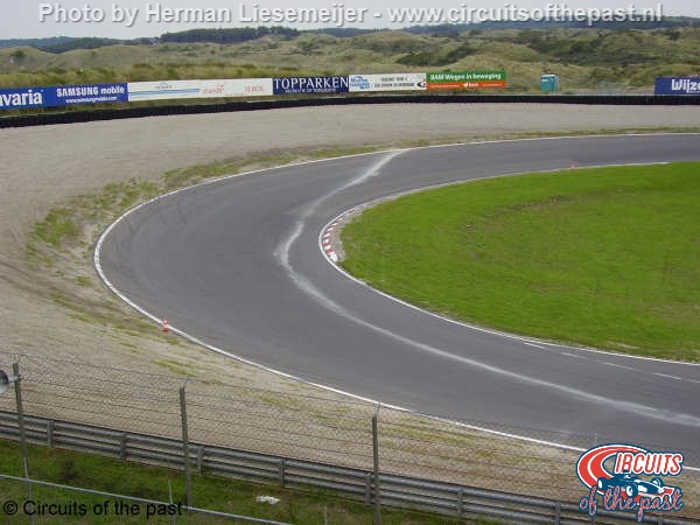
The famous Tarzan Corner
The official explanation for the name Tarzan corner is the following: At the site where since 1948 the circuit is where kitchen-gardens before. When the circuit was built, one of the owners – known in Zandvoort as Tarzan because he was a very large person – didn’t want to give up his garden. But when they promised to give the corner at his ground his nickname, he was willing to co-operate.
However, according to some sources the story above is just a myth. In real the corner should have been named after the road roller, nicknamed Tarzan, which was used by the construction of the circuit. But other sources say that the corner has been named after Tarzan because the movie “Tarzan of the apes” was very popular at that time, short after world War Two. So there is no unambiguous explanation for the name Tarzan Corner.
Gerlach Corner
This corner in named after Doctor W. Gerlach who was killed here in 1957. Many sources tell it was the first fatal accident at Zandvoort, but it was actually the second fatality on the track. The first was Hendrik Dik who died on March 22, 1952 at Zandvoort.
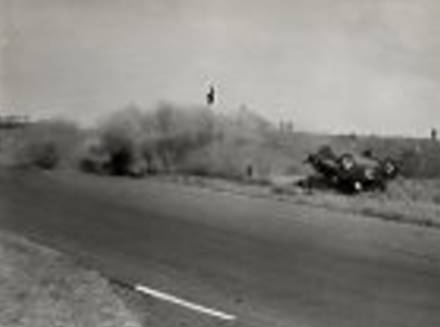
The crash of Dr. Gerlach.
Hugenholtz Corner
When circuit director Hans Hugenholtz retired, there was no money for a farewell gift. To do something they called a corner to him. An interesting detail is that Mr. Hugenholtz also imported wines. And the Dutch word for corner “bocht” means also bad wine…
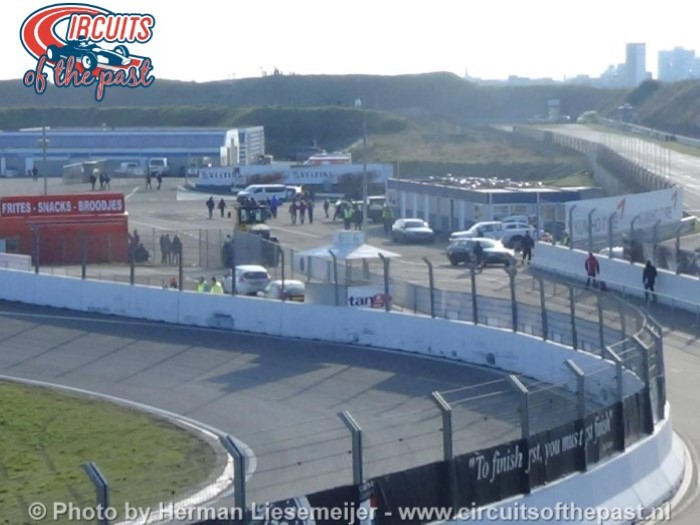
Hunse Ridge
The Hunse Ridge (Hunserug in Dutch) is actually not a corner but a short straight over a hillock. After the Hunse Ridge comes a fast section with full throttle kinks.
The Hunse Ridge was called after Cas Hunse, a chairman of the Royal Dutch Motorcycle Assosiation. At that time he saw a nice hillock on the site where the circuit should be built. He came with the idea to lead the track over this hillock. The name Hunserug is often incorrectly written as Hunzerug.

The exit of the Hugenholtz Corner and the beginning of the Hunserug.
Jan de Wijker zijn veld – Rob Slotemaker Corner
Rob Slotemaker Corner is part of the fast section from the Hunze Ridge to the Scheivlak Corner. The original name of this corner was “Jan de Wijker zijn veld” – which is Dutch for the field of Jan de Wijker – called after a man from the Dutch village Wijk aan Zee who had a kitchen-garden here.
Jan de Wijker zijn veld was the original name of the second kink of a series of three fast kinks in the sprint towards Scheivlak. The name often caused confusion among foreign commentators. They thought the first kink was called “Zijn veld”, and the second “Jan de Wijker”, not realizing that this was one single name for the second kink.
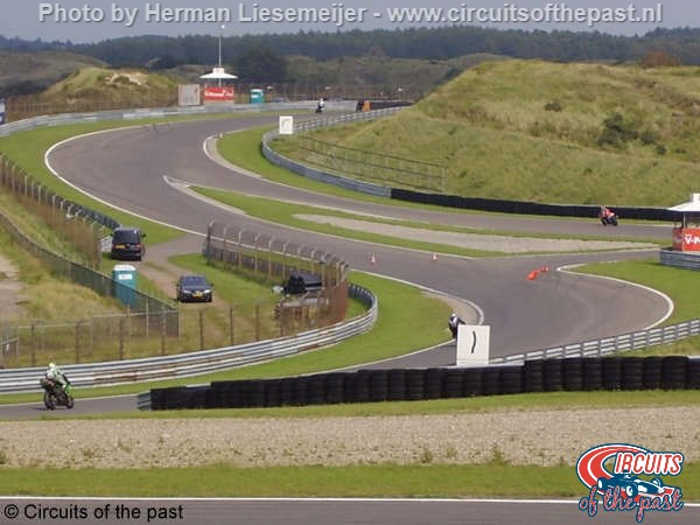
This corner was later named after Rob Slotemaker who died here after a crash on September the 16th 1979. Rob Slotemaker was a famous Dutch racing driver at that time, and he was the founder of the anti-skid school at Zandvoort. He was also the mentor of many Dutch drivers like ex Formula One driver Jan Lammers. The name Rob Slotemaker is a part of the history of the Zandvoort race track.
Until 2012 there was also a bronze memorial with his face at the entrance of the circuit. But the old entrance was demolished in 2012 and replaced. The memorial is now stored until a new site has been found for it.
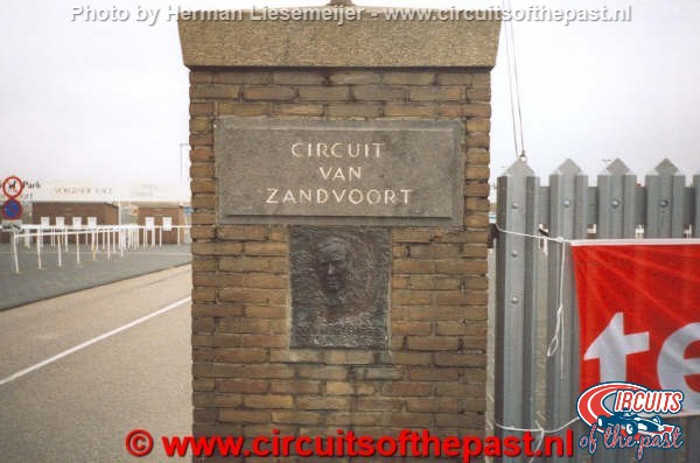
Scheivlak Corner
Scheivlak is old Dutch for border. At the site was in the 19th century the border between the public dunes and the dunes of the Young Lord Quarles van Ufford.
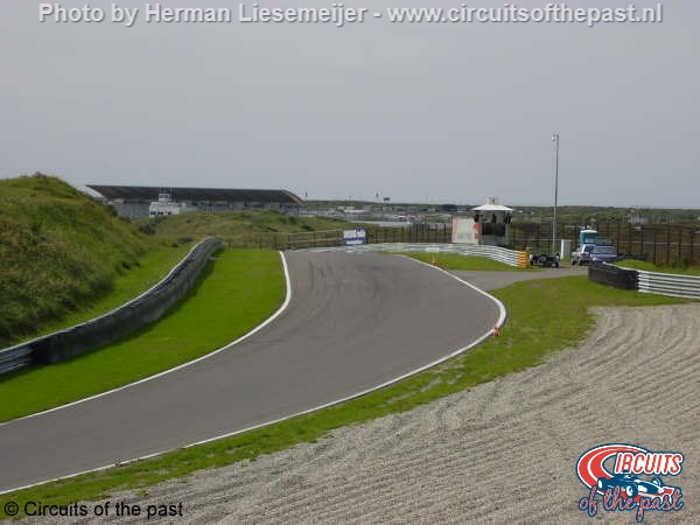
Hondenvlak
Hondenvlak means something like dog site. Probably at this site where the kennels used by the people of Zandvoort in the 18th and 19th century for their draught-dogs. At this time it was not allowed to keep a dog at home.
The Hondenvlak was a fast combination of two kinks, comparable with the Masta Kink at old Spa-Francorchamps. In 1980 the fast Hondenvlak was replaced by a chicane called Marlboro Corner.
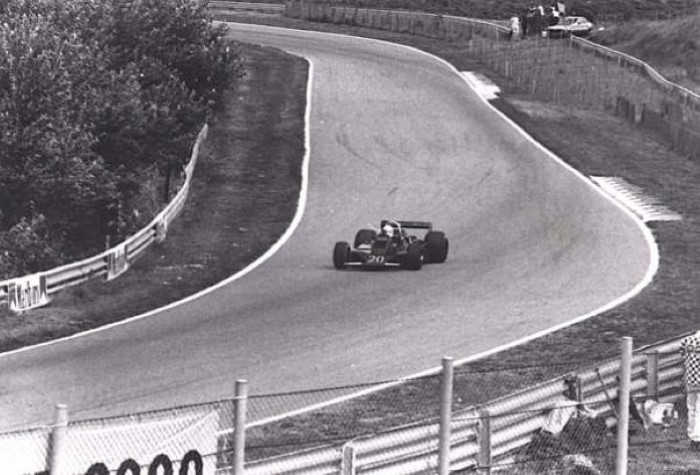
A picture from 1978, seen from Tunnel East, with the second Hondenvlak on the background.
Tunnel East (Tunnel Oost)
Tunnel East was a fast kink, named after the tunnel underneath the track (immediately after the kink), on the east side of the Zandvoort circuit. This tunnel was the access to the sports fields inside the track.
This kink was also the site of two tragedies in Formula One. In 1970 Piers Courage lost his life here during the Dutch Grand Prix. Three years later Roger Williamson had a fatal accident, almost on the same site.
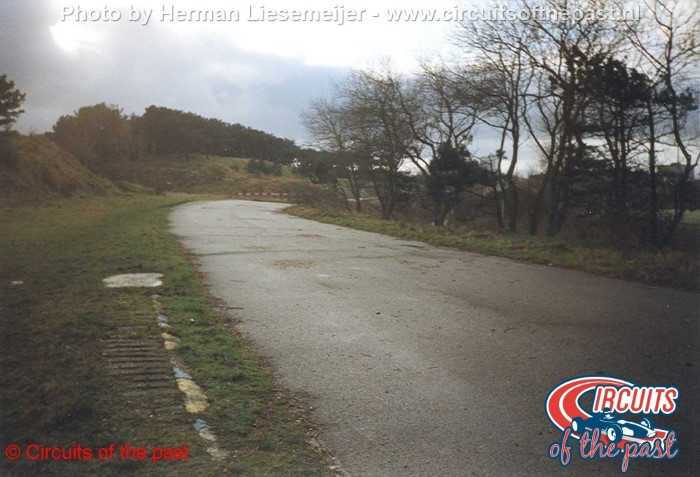 Tunnel East in the nineties, when the tunnel was already gone. See also a lap at old Zandvoort.
Tunnel East in the nineties, when the tunnel was already gone. See also a lap at old Zandvoort.
Bos In
“Bos In” is Dutch for into the woods. Here they entered a forest which was planted in the thirties. When there where plans for a circuit here the designers did like the idea to lead a part of the track trough the woods.
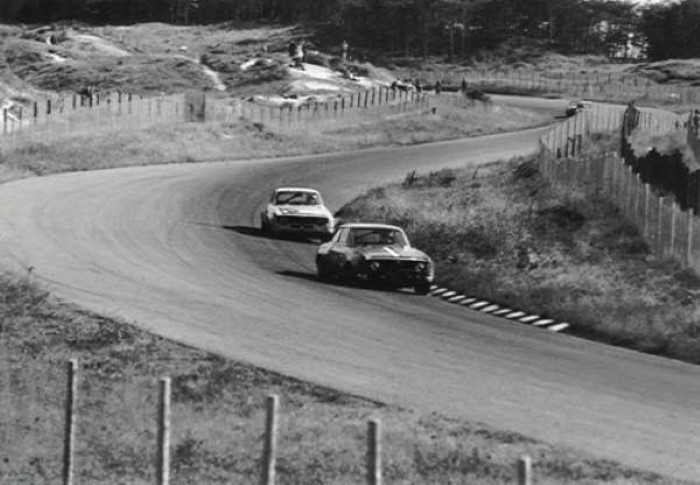
In the winter from 1964 to 1965 they felled about 80% of the trees because a bug plague killed the trees. The remaining trees are still there in the holiday resort which is now at this site. At the end of 1972 the “Bos In” was replaced by a chicane, the Panorama Corner.
Bos Uit
The Bos Uit was the final corner at Zandvoort. “Bos Uit” is Dutch for out of the woods. Here they leaved the forest section and enter the long Start/Finish straight.
When they built a new section in 1989 (See also the page with the circuit layouts) a new “Bos Uit” was built a few hundred metres from the original one. Later they changed the name to Arie Luyendijk Corner, after the Dutch Indy 500 winner.
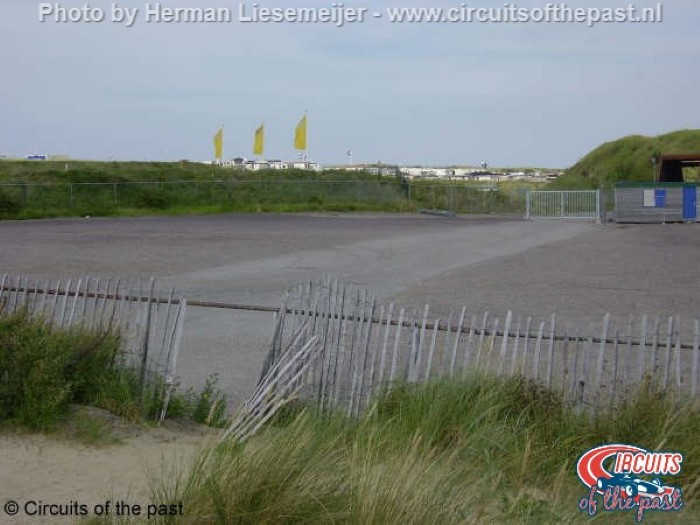
A remain of the original Bos Uit.
Pulleveld
On old maps you often find the name Pulleveld near the last corner. Especially outside the Netherlands, many people think that this was the name of the corner. But the name Pulleveld had nothing to do with the circuit, it was just the name of the dunes next to the race track.
The origin of the name Pulleveld is not known. Veld is Dutch for field, so Pulleveld means Pulle his field. Probably someone named, or nicknamed, Pull or Pulle had a potato field here which was very usual in the village of Zandvoort in the old days.
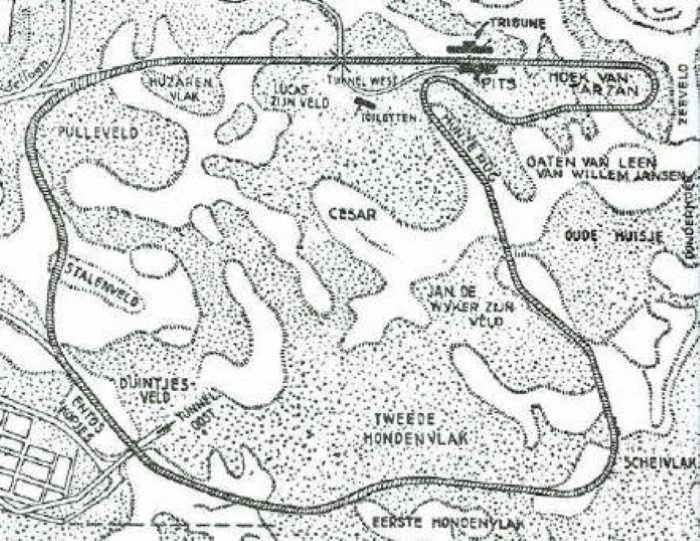
Vermeulen Straight
Not only the corners, but also the Start/Finish straight once had a name. When circuit director Jim Vermeulen resigned in 1987, a group of drivers took the initiative to name the straight after him. A sign with a vertical straight line and the tekst “Vermeulen End” (Dutch for Vermeulen Straight) was unveiled near Start/Finish.
This sign was barely visible for spectators. I still remember that I saw this sign when I was waiting for the start, during the race course and the track days in which I participated in the nineties. That was the only occasion you saw it, because when you passed it at speed you didn’t noticed it at all.
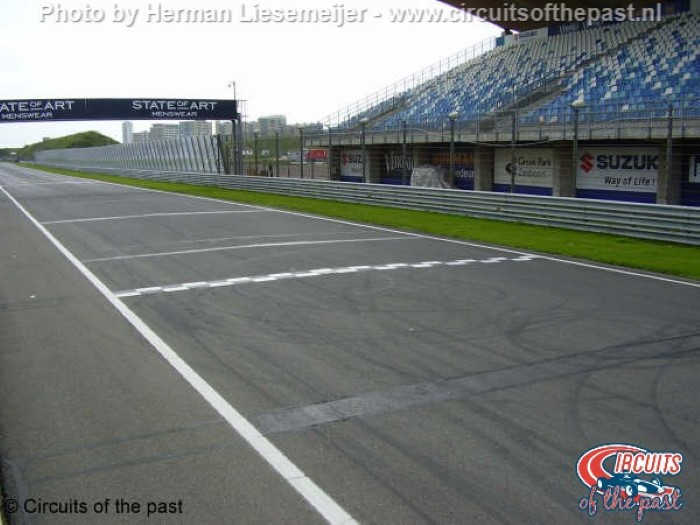
Nice to mention: After Jim Vermeulen resigned as circuit director he became director of the resort that was built on a part of the circuit ground in 1989. So he almost walked litterally over to the “enemy”. But the peace was signed soon when the resort sponsored a corner on the interim circuit, the Gran Dorado Corner today known as the Kumho Corner.
See also: Zandvoort Circuit – The history >>
Text: Herman Liesemeijer
Pictures: Rob Petersen, Rob Soethoudt & Herman Liesemeijer
Subscribe to our YouTube Channel: youtube.com/circuitsofthepast


